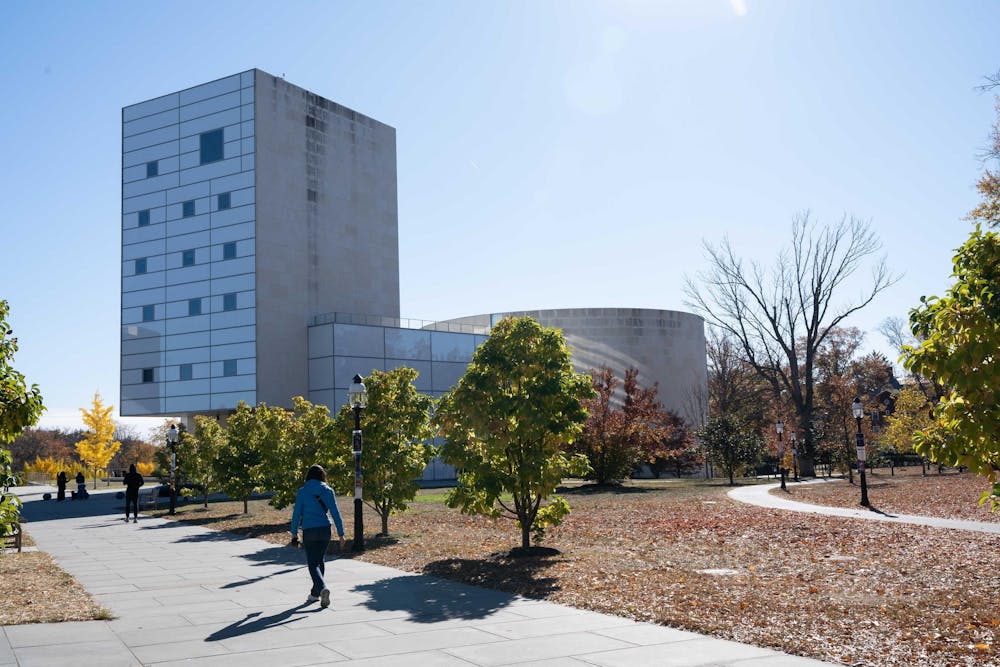Despite coming into Princeton as a B.S.E. student, I knew that I wanted to continue the creative writing I had devoted myself to in high school. But due to both the curricular demands of a Princeton B.S.E. degree and the notorious difficulty of getting into a CWR class, this goal has become almost unattainable.
When I try to articulate my longing for creative writing to many of my B.S.E. first-year peers, they don’t seem to get it. For a lot of them, their only experience with creative writing was the college essay process. And throughout their Princeton careers, many of them will never write creatively at all.
The B.S.E. program and CWR should prioritize and promote the unique learning experiences that the fine arts provides, and CWR should create initiatives which make creative writing as a discipline more accessible for B.S.E. students through changes in course enrollment seat-saving and through revisions to B.S.E. distribution requirements.
I recently attended a reading at Labyrinth Books partially hosted by the CWR program, which included readings from eight Creative Writing (CWR) minor-pursuant poets. Of these, most of the students were English or Comparative Literature majors, with just one COS major representing B.S.E. despite the 27.7 percent of the Class of 2024 who earned a B.S.E. degree. This is a major problem.
Creative writing is an art form that is so integral to the ways in which we understand the human experience and ourselves. Yet because of the lack of exposure, B.S.E. students are deprived of this facet of the l that the University strives to provide. In a discipline which is so outward-facing, it is crucial that students learn to turn the lens inward. One of the easiest ways to do so — to write with true creative freedom and artistic license, for purposes of expression and self-understanding rather than answering a prompt or analyzing a text — is by enrolling in introductory CWR courses. Conscious efforts must be made toward pushing more B.S.E. students towards these courses.
The first and second years of the B.S.E. program are notoriously both time and psyche-consuming, spent fulfilling B.S.E., major, and track-specific pre-reqs. A.B. first- and second-years, on the other hand, have far more built-in flexibility in their course load for electives. The “standard” B.S.E. first-year course load includes 7 required courses, leaving just two slots for electives. The typical A.B. first-year schedule requires only a Writing Seminar and a language class.
On top of this, significant out-of-class time devoted to writing, and very often in a style which is unfamiliar to many, may discourage B.S.E. students from pursuing CWR classes. Furthermore, the minor in Creative Writing expects students to have taken 2–3 introductory courses by the end of their second year on a well-defined pathway whose deadline is junior spring. This usually requires knowing, “by mid-way through the second semester of freshman year — when the application process for the following semester’s courses takes place — that [they] would like to apply for a Creative Writing thesis two years later,” as a former columnist has put it.
Managing these difficulties while juggling the first two years as a B.S.E. major can provide a significant obstacle to pursuing CWR classes or obtaining the CWR minor for engineering students. And, because of the difficulty of enrolling in one of CWR classes, it can almost seem like even trying to go for it isn’t worth many engineering students’ time.
Creative writing’s strength and identity as a discipline lies in its breadth and its accessibility, in its ability to open its arms to anyone in need of embrace and guide them toward a more cogent understanding of themself and the world. The images and origins of writers are incredibly diverse — and the CWR program should better reflect this.
Currently, introductory CWR courses reserve three spots per section for first-year students. CWR should revise their course enrollment policy for introductory courses, reserving between 2–3 of their 10 slots — one of which should be a first-year slot — specifically for B.S.E. students.
The B.S.E. program should also work to bridge this gap. The current B.S.E. distribution requirements require only 7 total humanities and social science classes across four of either the CD, EC, EM, HA, LA, or SA distributions or intermediate-level language courses. The B.S.E. program should strongly encourage involvement in the arts by requiring that one of these must be a Lewis Center class or at least an LA credit.
Through these efforts, the University will stay true to its ideal of providing a true liberal arts education to all students, creating more intellectually diverse student bodies both within both the CWR departments and across the School of Engineering and Applied Science to benefit all of Princeton.

Callisto Lim (She/They) is a first-year from Houston, Texas, planning to major in Civil Engineering on the architecture track while pursuing her passions in Creative Writing, whether she can get into the classes or not. They have previously been published in the New York Times, Angles Literary Magazine, and more. To reach her, email callisto[at]princeton.edu!








